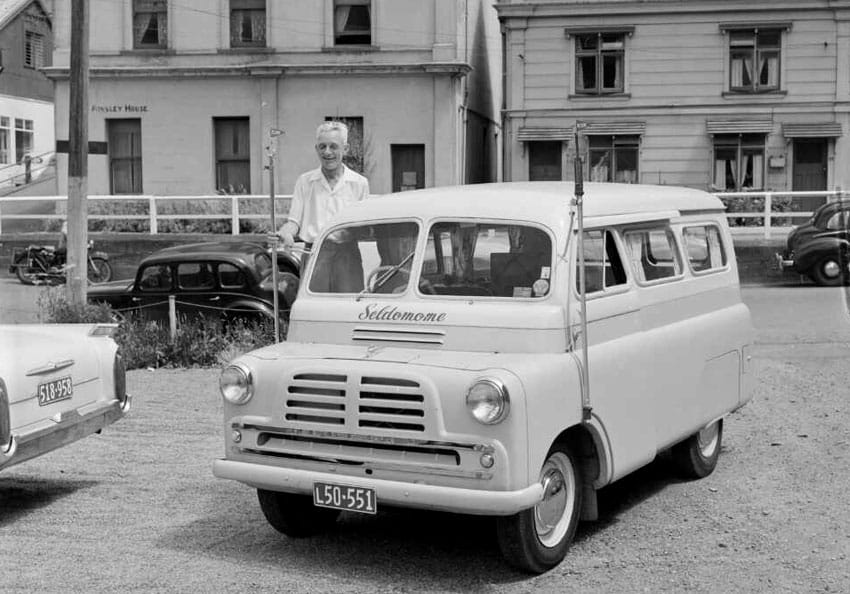This is a free fortnightly newsletter about the New Zealand Net.
If you would like to be notified by email when a new edition is published, please contact ZL1NZ.
Browse our Newsletter Archive and List of Net Tips.
Featured key
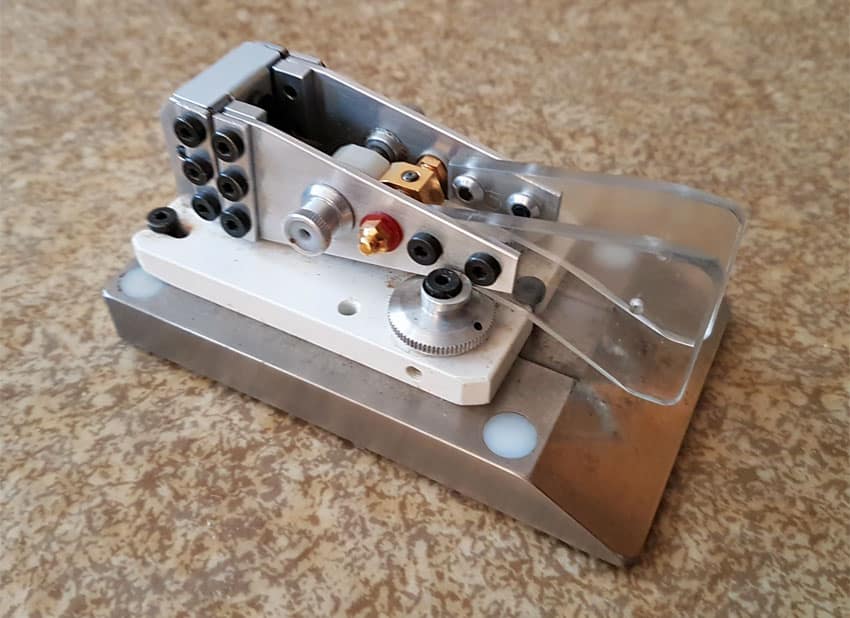
DX-2 paddles by DG9FEN. Photos: SM5LNE
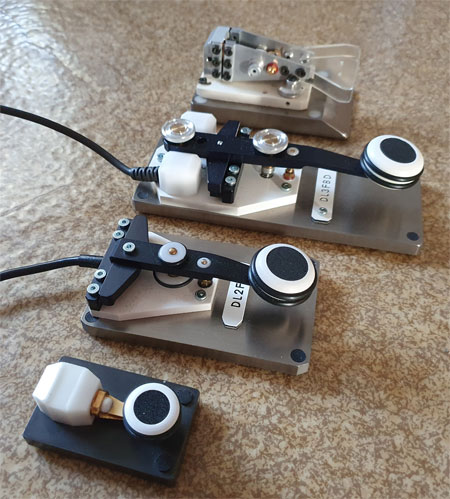
By Jan SM5LNE
Here are photos of the Morse paddle DX-2 and straight keys made by the fine machinist and engineer Kurt Zuehlke DG9FEN in Bad Homburg, Germany.
Kurt made very fey keys, and only to order.
He was born in Berlin in 1913 and became a Silent Key in 2014 at the age of 101.
_…_
* If you have an interesting key for this feature, please send me a nice clear photo and a few words describing it.
Quick notes
 QRP Labs has introduced the tiny QMX 5-band transceiver, offering CW and digital modes, and it sure looks impressive. The QMX covers 80, 60, 40, 30 and 20 metre bands with full break-in CW and 5W output. In kit form, the QMX costs US$95. Fully assembled with enclosure it’s US$165. The company produces about 25 units a week and at that rate the waiting list for assembled units is more than six months.
QRP Labs has introduced the tiny QMX 5-band transceiver, offering CW and digital modes, and it sure looks impressive. The QMX covers 80, 60, 40, 30 and 20 metre bands with full break-in CW and 5W output. In kit form, the QMX costs US$95. Fully assembled with enclosure it’s US$165. The company produces about 25 units a week and at that rate the waiting list for assembled units is more than six months.
The winner of the Bruce Scahill Award for Best Fist, as chosen by participants in the Winter Straight Key Night, is Grant ZL2GD. Congratulations OM and thanks to all the ops who voted. There were many nice fists heard during SKN, and half a dozen worthy nominees.
Condolences to Bede ZL4KX, our Friday Net Controller, on the death of his mother a few days ago.
The ARRL’s National Traffic System (NTS) is undergoing a modernisation project which includes systems for “encapsulating” emergency serivce organisations’ messaging requirements within radiograms. This sort of messaging integration with emergency services is something another US traffic group, Radio Relay International, has been developing too.
Photo flashback
The photo shows “Mr Ashford” beside his Bedford van, named Seldomome, in Nelson on 26 January 1960. Another photo taken the same day shows the back of the van contained two bunks, a military surplus ZC1 Mk2 transmitter/receiver and a loudspeaker with the callsign ZL2RO on it. That left room for very little else in the vehicle!
My very limited research reveals that JW Ashford ZL2RO was listed in the 1962 callbook as living in Moana, Nelson. In a much earlier callbook (1935) his address was “Lighthouse, Farewell Spit”. Doesn’t that sound like a great radio location? If you don’t mind sand blowing into your gear!
Making Morse at MOTAT
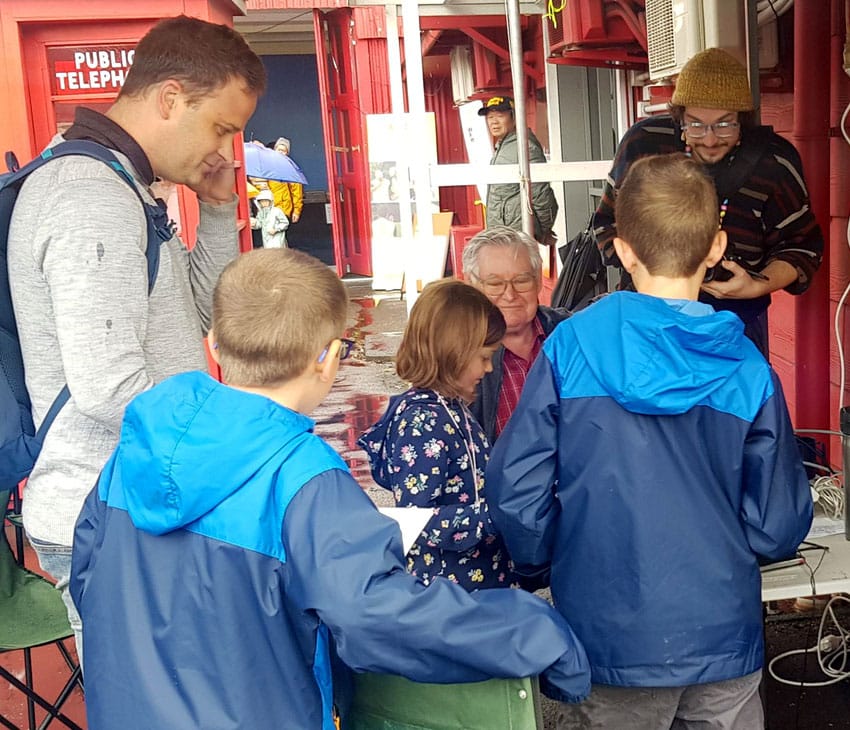
Franklin Amateur Radio Club demonstration at MOTAT. Peter ZL1PX is in the centre, assisting a new Morse operator.
By Peter ZL1PX
Auckland’s MOTAT (Museum of Transport and Technology) is the biggest technology exhibition in New Zealand, so when I found out they were looking for radio amateurs to send Morse Code I couldn’t resist the invitation.
The plan was for a ‘Live Event’ on Sunday 18 June. An amateur station would be set up outside the telecom exhibition building – which I naively hoped would be kind to radio propagation. There was a 10 metre long roof area above us that looked like it might accommodate an end-fed antenna, so Steve ZL1TZP and I experimented with end-feds but couldn’t make one work successfully.
We decided late in the game to cut a dipole for 7020 kHz. This would fit well in our roof area and gave us an SWR of 1:1. There was a great deal of relief early on when we saw our dipole was audible on the KiwiSDR receiver at Marahau, Blenheim.
However… both Steve and I live in rural South Auckland where noise is not that strong. At MOTAT in Western Springs, the noise on my Icom reached S9 or above and stayed there most of the day. Sadly, this meant we could only hear really strong stations – which proved to be Neil ZL1NZ and Paul ZL1AJY (both in Auckland). My apologies to those other stations who tried to break through. I know a number of other NZ Net members and others tried but we could not hear them.
The plan was always to give MOTAT visitors an opportunity to send and receive a Morse message. We used a printed card with a Morse chart on one side and a two large rectangles on the other. Each visitor wrote their name in one rectangle, then translated that into Morse in the second rectangle. They then practiced sending their name on a loud sound generator a couple of times.
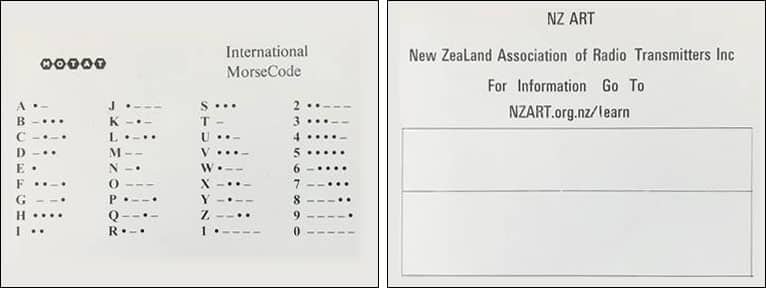
When they felt ready, I called Neil or Paul, asking if they were ready for a message from the visitor (E.G. ZL1NZ QRV FOR IVY? BK). You will notice I included the visitor name in my first request so it was clear whom the link station would respond to. The link station then sent back they were ready to receive (E.G. QRV FOR IVY BK) and I gave my Morse key to the visitor who tapped in their name. When they finished, I sent BK.
Neil or Paul then sent back the name really slowly. And you did it well guys, because there were big smiles of recognition and much joy at MOTAT. I think the repetition during training had achieved the effect of embedding the letters deeply into the brain as most visitors gave a big smile when they heard their name come in.
With all the excitement, I didn’t always tally the number of visitors who sent Morse on the day but I believe there were more than 40. That’s 40 individuals who have a joyful memory of succeeding in Morse and 40 families who heard the exchange. I am well happy with that.
Thanks again to all who took part, whether you got through or not.
Amazing World War 1 radio
Gerard ZL2GVA introduced us to some radio history from World War 1 last week. It all started with a triva question he posed to the NZ Net:
NR23 R ZL2GVA 14/10 BLENHEIM 0900Z 14JUN23 = NZ NET TRIVIA = WHAT MAKES THE DUTCH MUNICIPALITY OF BAARLE NASSAU SPECIAL QUERY = ZL2GVA
The intriguing answer to that can be found in this article and this video.
And then, Gerard also pointed out that Baarle Nassau was significant in World War 1 radio communication. The Germans had occupied Belgium, but they could not occupy the Belgian enclaves in Baarle Nassau, since they were surrounded by neutral Dutch territory. The Belgians took advantage of that situation by building a radio station, including a 40-metre tall mast, in Baarle.
According to this article, “Zendstation MN7 was used to exchange messages with the Belgian resistance and to jam German communications.”
The MN7 mast was taken down after World War 1, but a replica (not erected) was unveiled in 2014 as part of a WW1 commemoration project.
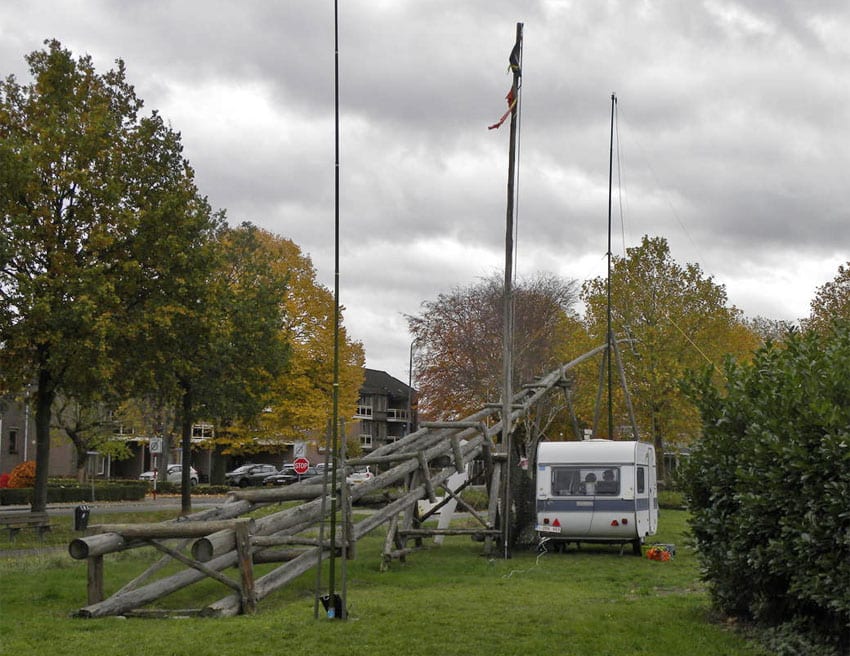
Photo: OP187MN
In 2018, Belgian radio amateurs operated a special event station from a caravan next to the replica mast.
Fleet code and weather obs
By Gavin ZL1BBW
A little bit more about the Morse Weather maps featured in NZ Net News 108.
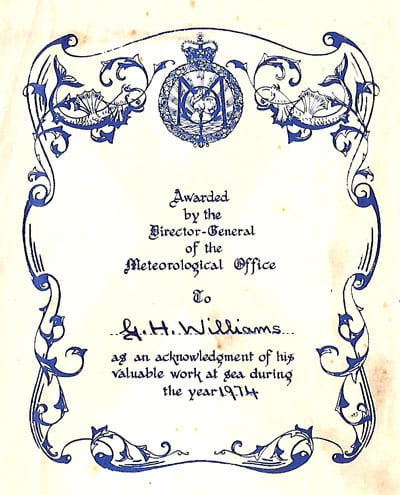 We had to take these religiously at sea, although the transcribing of them was often done by one of the Navigating Cadets. I have seen some glorious maps produced, different colour crayons, all the correct symbols on the isobars, the full 9 yards.
We had to take these religiously at sea, although the transcribing of them was often done by one of the Navigating Cadets. I have seen some glorious maps produced, different colour crayons, all the correct symbols on the isobars, the full 9 yards.
The ship’s part in this was to send in OBS, 6 hourly. It was not so bad if you were a 2-op ship, but for a solo op it could be a pain.
The OBS logbook had one column headed ICE, and on one ship some bright sod started filling in the column with words ending in ICE, so we got NICE, RICE, etc., and over the days this column grown in length and grammatical complexity, until the Old Man (the Captain) inspected the log, and went into fits of rage over the mutilation of an official record. Some poor soul got the job of copying the log into a new book.
Anyway, if you got your OBS away quick sharp, then at the end of the year, the Met Office gave out prizes. I won a couple – got a dictionary one time, a nice atlas another, both with a sticker thing in the front, photo attached.
Audio challenge
John G4ETQ sent in this recording and wonders how many readers can guess what it is. Here are a couple of clues:
1. It can be heard every Saturday morning on 80m in the UK.
2. It isn’t Morse Code. 🙂
Please send your answers via radiogram to ZL1NZ, or via email if no propagation.
Answer to previous Morse challenge
The ‘Bathtub’ key is officially the RAF Type F key. Correct answers were received from G4ETQ, VK3DRQ, ZL1ANY, ZL1AYN, ZL1BBW, ZL1PX and ZL2GVA.
Video: Lytle Triplex key
Advertising archive
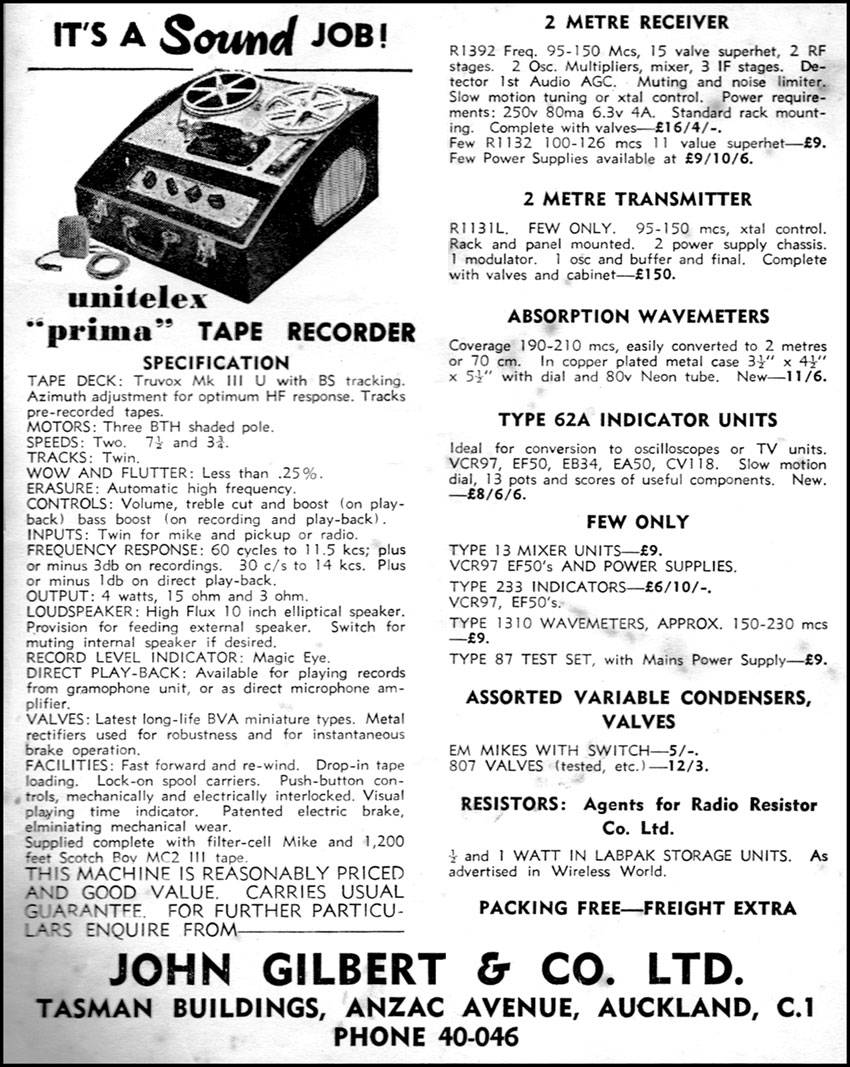
1956
Suggestions?
If you have suggestions on how to make the NZ Net better, or things you’d like to see covered in these updates, please contact ZL1NZ. You might even like to write something for the newsletter.
Thanks for reading, and I hope to hear you soon on the NZ Net!
—
Neil Sanderson ZL1NZ, Net Manager
New Zealand Net (NZ NET)
3535.0 kHz at 9pm NZT Mon-Fri

